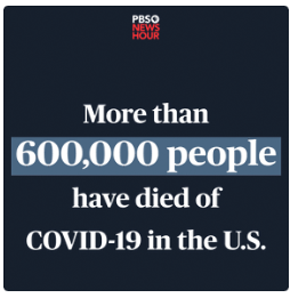Health Plan Weekly
-
Trump Administration Gives MA Plans a Parting Gift With Hefty Payment Boost
As one of its final moves before the Trump administration officially ended, CMS on Jan. 15 gave Medicare Advantage (MA) plans a 2022 payment increase that impressed Wall Street analysts.
The 2022 Medicare Advantage and Part D Rate Announcement — which the administration released early in order to offer some additional guidance to plan sponsors during the COVID-19 pandemic — indicated that MA organizations will see an average reimbursement boost of 4.08% next year. That’s a significant improvement from the 2.8% rate increase that CMS projected in October, which Citi analyst Ralph Giacobbe suggested “represents a positive final parting shot by CMS and the Trump administration for the MA program, and de-risks any rate concerns for 2022.”

-
-
UnitedHealth Saw COVID Costs, Care Deferral Rise in 4Q
In the fourth quarter of 2020, health care spending patterns experienced by the country’s largest health insurer “returned to seasonal baselines” even as COVID-19 cases surged all over the U.S. Such is one major takeaway from UnitedHealth Group’s fourth-quarter 2020 earnings report, which offers an instructive look at the unique ways that the pandemic continues to affect health care economics.
During a Jan. 20 conference call with investors, UnitedHealth Chief Financial Officer John Rex explained that two opposing forces caused health care spending to align with historical levels. While the amount that UnitedHealth spent on COVID-19-related care increased compared with the third quarter, overall outpatient activity dipped below baseline as the end of the year drew closer, reflecting the fact that more people started deferring routine and elective care as coronavirus cases rose.

-
For Michigan Payer’s New President, Technology Is a ‘Priority’
Health insurers face dozens of technological challenges in coming years, as federal regulations mandating electronic health record interoperability and price transparency mean that every health insurer has had to start developing new information technology and data capabilities.
Praveen Thadani, the new president of Priority Health, has the background to do just that. Priority is a nonprofit payer with nearly 900,000 members, according to AIS Health’s Directory of Health Plans, making it the carrier with the second-highest membership in the state of Michigan. Thadani says he was drawn to Priority’s “amazing heritage of innovation” in accepting the role.

-
2021 Outlook: Impact of Pandemic Utilization Trends Remains Unclear
Since the start of the COVID-19 pandemic, the managed care industry has wrestled with how to project utilization of normal care and assess the risk of funding care related to the virus, especially since most carriers have elected to waive cost sharing for COVID-19 treatment. While insurers generally seem to be in good financial shape, experts say that plans face continuing uncertainty — and one actuary suggests that pandemic-related financial risk has met or exceeded the conditions of his modeling’s worst-case scenario.
In the early days of 2021, the U.S. confronted a grim milestone when the tally of Americans who died from COVID-19 reached 400,000. Meanwhile, the Trump administration was criticized for how it handled vaccine rollout and denounced critical public health tactics including mask wearing, while states reopened their economies and public spaces to varying degrees, despite the objections of public health officials.












